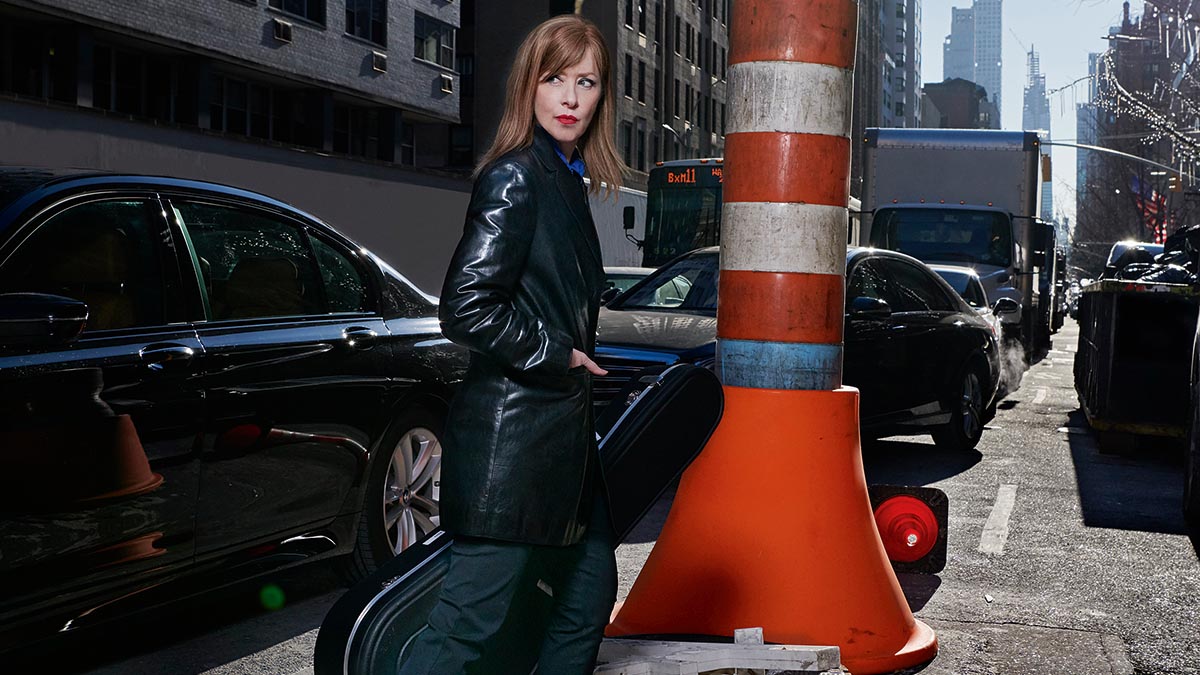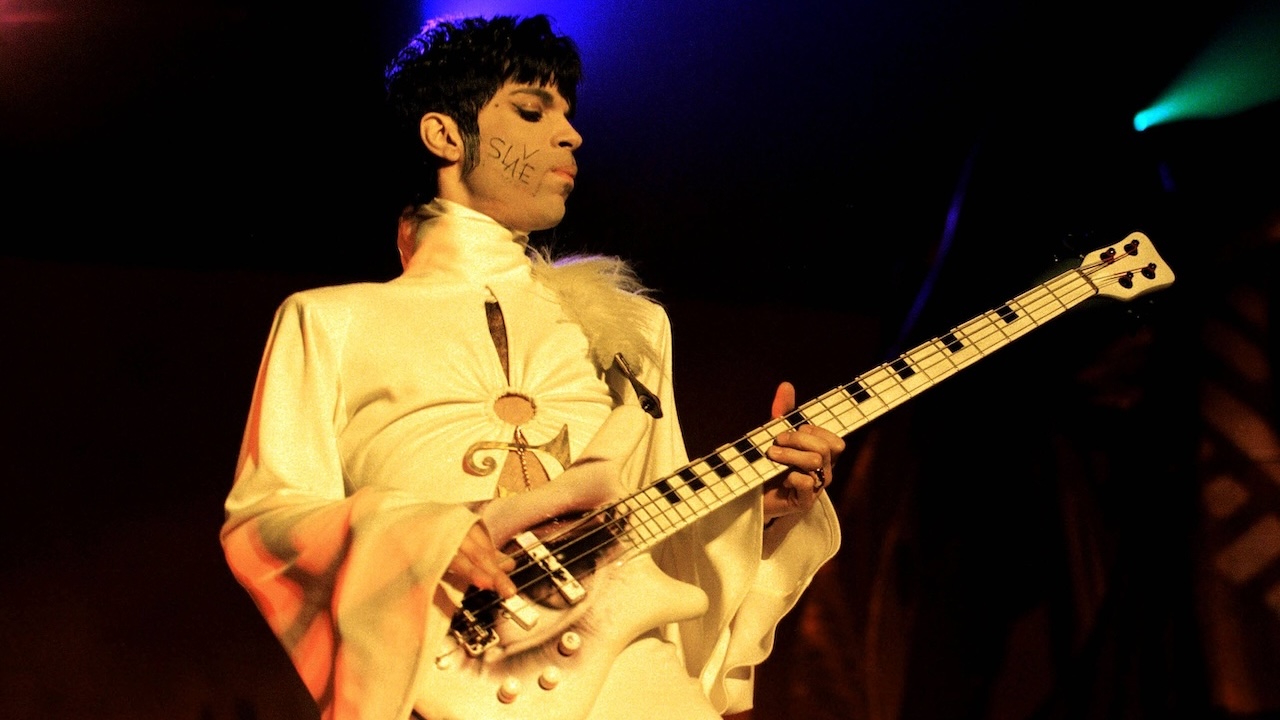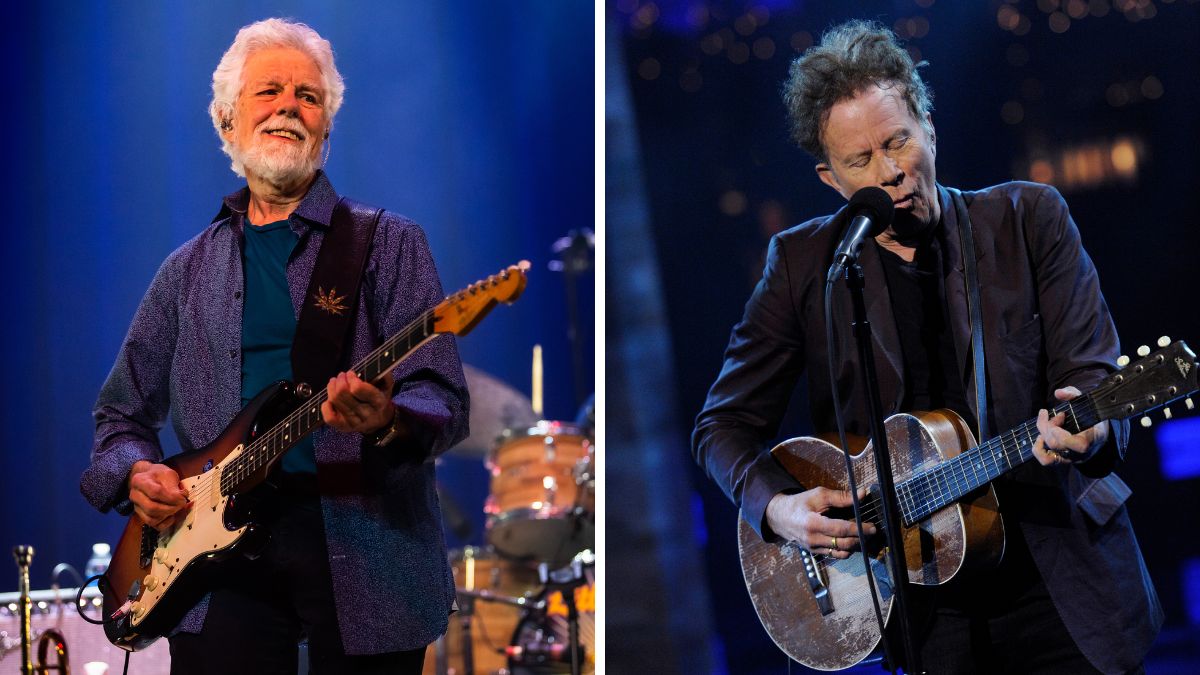Suzanne Vega: “I love the acoustic guitar – I always have. I love the sound of it. I love playing it. I love the look of it. I love everything about it”
As Vega prepares to return to the UK with an album of songs from the Big Apple, we join the legendary New York singer-songwriter to talk guitars and songcraft

Bob Dylan and Joni Mitchell are rightly thought of as poet laureates of rock for the 60s and 70s. One could argue, with justice, that Suzanne Vega was cut from the same brilliant cloth when she emerged onto the 1980s folk scene.
Her songs had a poise and honesty that cut through the day-glo bombast of the 80s charts and pierced people’s hearts, most notably with her tragic ballad of child abuse, Luka, but also with introspective songs such as Marlene On The Wall and Tom’s Diner.
Though she found fame as a modern folk artist, becoming the first female headliner at Glastonbury Festival in 1989, she resisted typecasting, exploring electronica in songs such as 1992’s Blood Makes Noise and carving her own unique path onwards. But she has always returned to what she calls “her only instrument”, the guitar.
With a UK tour of her 2020 album, An Evening Of New York Songs And Stories, coming in spring next year, we join Suzanne to reflect on her early years with the Greenwich Village scene, the art of songwriting, and the hand-built Czech guitars that have become her standby for writing and performing.
Your new album was recorded live in the heart of New York, in the same city where you first started performing as a teenager. What was the folk scene like then?
“Well, they were very small audiences, let’s put it that way. I mean, in the very beginning, in the coffee houses, it was great. The audiences really listened to the songs. And this was in the 70s – it was more difficult when I started to try to get gigs, at say, The Bitter End, which I was never successful at.
“I tried getting a show there for two years and never got one. Eventually, it occurred to me to try a different club, which is when I went over to Folk City and found a really great group of people that were very encouraging.
Get The Pick Newsletter
All the latest guitar news, interviews, lessons, reviews, deals and more, direct to your inbox!
“The difficult part was actually getting on the stage and learning how to perform in front of a crowd without feeling shy or inhibited or angry. Sometimes I felt judged. And that would annoy me. So I had to really learn how to put all of that aside and learn how to really give a show.”
When did you realise you might actually have something, as a songwriter, that spoke to people?
“Well, the second song I wrote was called The Silver Lady. And it’s kind of a long narrative ballad. I had just turned 15 years old when I wrote that and I remember thinking, ‘I think I’ve got something here.’ I had been trying to write songs since I was 11 and I had written my first song when I was 14, which was okay, it was sort of a country western song.
“But with The Silver Lady I thought I really had something good. It took me a couple of years to work up my courage to go out and sing it, though. Moving from songwriting to performing was a big leap for me.
“I liked the privacy of my room and I liked the songwriting process, but learning how to be a performer was a whole other thing and that was more difficult. Not because of the audiences but because I felt that I was faking it, you know – I was suddenly trying to be pretty and nice instead of telling the truth in a song. So I had to work that out.
I just always felt compelled to go on the stage and sing the songs myself. And I always felt I had something to say
“I just always felt compelled to go on the stage and sing the songs myself. And I always felt I had something to say. And even in the auditions where I was rejected there would be one or two people who had been listening. Very often someone would come up and say, ‘I really liked your lyrics, they really speak to me.’ And that was enough to keep me going till the next audition.”
Your fingerpicking style is elegant and always serves the songs well – how did you develop it, early on?
“I had taken one or two lessons. We had a boarder in our house because, from time to time, we would rent out a room if we were running short of cash. And this woman taught me a couple of lessons on the guitar, as I recall. It was some kind of picking thing that she taught me – and how to hammer on and how to pull off.
“But that seemed really obvious to me, so I’m not sure if I had already been doing that. And the rest of the time, I just made up things that made sense to me, you know, every other string down and then two strings up – that kind of thing.
I remember sitting patiently and working out for hours where to put my fingers and how to how to pluck the strings so they made a pattern and that there was a flow
“I would do whatever it took to get some kind of rhythm going. Sometimes picking three strings at once and filling them in. Now I do it pretty unconsciously, so I don’t really know what I’m doing, but I just sort of do it. But, back then, I remember sitting patiently and working out for hours where to put my fingers and how to how to pluck the strings so they made a pattern and that there was a flow.”

What guitar did you use when you were starting out?
“It was my father’s guitar – he had a nylon-string classical guitar. He used to play blues songs, mostly by Lead Belly, and some folk songs, and he’d written a song or two himself. The guitar was just sort of propped up in the kitchen in the corner. And it was nice, so I played that nylon-string way until my early 20s.
“Eventually, I got my own guitar, which was a steel-string Guild, an enormous, gigantic beast of a guitar, and I bought that from my boyfriend for $200 back then. And so that was my first guitar.”
At what point did you start to believe you would have a career in playing guitar and writing songs?
“I started writing songs when I was 14, but I worked a day job right up until I got my record deal 10 years later – and I was very loath to let it go. By that time, I had a manager, Ron Fierstein, and he told me, ‘Look, you’ve got to quit your day job – you’re getting a lot of gigs, you’re getting good reviews, you’re on the verge of getting a record deal. You’ve got to quit.’ And I fought him.
“I said, ‘This is a good job for me.’ I think I was making $15,000 a year at that point, which was enough to live on. But I didn’t want to let it go and so he lent me $1,000, which during that time was more money than I’d ever seen in one place. I remember thinking, ‘How will I ever pay him back? It’s just such a huge amount of money.’ But within three months, I had the record deal.
Things took off really quickly. I went from being a receptionist to selling a million albums in about two years. So that was the moment when Ron came to me and said, ‘You’ve got to quit your day job’
“I probably had some kind of advance and things went very quickly from there. I had that development deal and then I got a great review in The New York Times and then there was a bidding war. And the next thing I knew I had an actual [full, major‑label] deal.
“Then the album came out and it sold a million copies. So I mean, things took off really quickly. I went from being a receptionist to selling a million albums in about two years. So that was the moment when Ron came to me and said, ‘You’ve got to quit your day job.’ And I reluctantly did so, because then I thought, ‘Okay, I can make a living.’”

Getting a major deal like that must have felt like you’d really arrived – but did the stakes being raised make it harder to write?
“Well, you hit the nail on the head – it also made me anxious. I remember being in the studio and coming in with a guitar and doing versions of the songs for the first album, feeling nervous. Because on the one hand, I was excited, I was happy that I had the deal, but I also knew I was in it for the long run and I didn’t want this to be a thing where I just burned out.
“I felt a lot of responsibility and I felt nervous doing Solitude Standing. There was a lot of pressure and I found the songwriting difficult for that second album. So it was both – I was both excited and nervous, but my manager Ron would be complaining. He complained to my boyfriend, ‘Why isn’t she happier? This is going so great.’ But I felt the pressure of it and I felt the responsibility of it.”

The new live album kicks off with Marlene On The Wall, which remains one of your finest songs. What’s the story behind it?
“Well, I had a poster – it was a picture actually, a photograph of Marlene Dietrich on the wall of my tiny little room. And sometimes as a kid I used to pretend to see things from different perspectives and to pretend to be different people.
“I was thinking, ‘If Marlene really had eyes that could see – if she was actually a sentient being, instead of just a picture on my wall – what advice would she give me and what was to be seen?’ You know, I sort of had aimed to be like her, I liked her glamour and her toughness and her humour. So she was kind of an ideal, and I felt that I was very far from that ideal.
“Those were my thoughts at that moment in time, and in the beginning I thought, ‘Oh, this song is too private, no-one will understand what I’m talking about here.’ I tried to get rid of it, but my guitar player at the time, John Gordon, told me that we needed an upbeat, major-key song to start the setlist and so I was not going to throw it away. And in the long run, he was right – it’s been a great show opener ever since.”
A lot of people know you best for Luka. It’s a desperately sad song – were you surprised it became such an enduring hit for you?
“Yes, it did surprise me. I mean, it took a while between the time that I wrote it and the time it was released – it was about two or three years. But my manager saw the potential in it right away.
“It was really Ron Fierstein who said, ‘I think that could be a hit.’ I couldn’t believe what he was saying, you know, because most people when they heard it in its acoustic version, they looked sad and they didn’t seem to like it.
“Nobody really asked for it and it seemed to be a song that was slightly embarrassing to certain audiences. But once it was produced with its radio-friendly clothing Luka became an immediate hit the minute it went to radio, and it was a hit all over the world. I realised then how universal a situation it was. Whereas I did not realise that when I wrote it.”
Do you embrace writing about a difficult subject matter in your songs or do you hesitate before tackling it?
“Both. I’m always nervous about it. But I sometimes feel compelled to do it. The people who have influenced me, like Lou Reed or Bob Dylan or Leonard Cohen, never shied away from difficult subjects. They told the truth in their songs, and even Paul Simon… you know, there’s a truthfulness about what they think and what they say. And that’s what makes it powerful.
“So, yeah, I got a lot of letters at the time saying, ‘Why did you write this? You wrote this all wrong…’ or people complaining: ‘We didn’t want to hear about child abuse at the breakfast table,’ because they would play it during the drive time. And so people would complain, but, you know, I stick by my guns – I felt I had a right to write it and people responded, millions of people.”
What’s your method for deciding if a song you’re writing is working out or not?
“I guess my rule of thumb from myself is: ‘Is the metre good and are the lines true? Does it say what I wanted to say?’ And if all three of those things work, then I figure, okay, at least technically it’s up on its feet. Then I play it for someone else, anybody else – it doesn’t matter who, for a small audience or one other person – and I wait to see the response that I get.
“And even then, sometimes there have been songs I’ve written and put on albums, and then decided later they were no good and they were some kind of failed experiment. So then I don’t go back and I don’t play those again.
I guess my rule of thumb from myself is: ‘Is the metre good and are the lines true? Does it say what I wanted to say?’
“But then there are the core songs that people do love and do know, or they come to know. And so that becomes the backbone of the body of work. But there’s always your own internal things that say, ‘Yeah, this is good, this really says what I wanted to say.’ And then there were other songs where I wasn’t sure, like with Marlene, for example – there were a lot of things I had stuck together.
“I wasn’t sure if the premise of the song was sound. But nobody seemed to care about that [laughs]. You know, I thought there were too many metaphors, and nobody’s gonna know what I’m talking about. But it didn’t seem to matter at all. Whereas something like The Queen And The Soldier – I thought of it as a good solid narrative ballad. But a lot of other people were really knocked out by it.”
What guitars do you tend to pick up the most these days?
“Well, [guitarist] Gerry Leonard had gotten in touch with the Furch company, they’re a family-run company out of Prague, out of the Czech Republic, and they do beautiful work. And they make beautiful guitars with beautiful inlay and gorgeous woods. And you can plug them in and they still have a lovely warm, full-bodied acoustic sound. So that’s what I use all the time.
“I still have all my other ones – I still have a couple of Guilds, and at the very beginning I had a couple of Yamahas. The other really nice one I bought for myself was a Martin from the 1940s. And that’s a very special one.”
At one point, I had a Fairlight and was hoping to be more like Peter Gabriel or Kate Bush. And that didn’t work out very well
What does the guitar mean to you, in terms of your life in music?
“Starting out – and even now – the guitar is my only instrument. I’ve tried playing other instruments, I’ve tried to learn the piano. At one point, I had a Fairlight [sampling synthesizer] and was hoping to be more like Peter Gabriel or Kate Bush. And that didn’t work out very well.
“But I love the acoustic guitar – I always have. I love the sound of it. I love playing it. I love the look of it. I love everything about it. And I taught myself how to fingerpick and I taught myself [theory] from books and from the random chords that I learned from my stepfather and from my uncle. So it’s my main instrument, and it’s what I really love.”
- An Evening Of New York Songs And Stories is out now via Cooking Vinyl.
Jamie Dickson is Editor-in-Chief of Guitarist magazine, Britain's best-selling and longest-running monthly for guitar players. He started his career at the Daily Telegraph in London, where his first assignment was interviewing blue-eyed soul legend Robert Palmer, going on to become a full-time author on music, writing for benchmark references such as 1001 Albums You Must Hear Before You Die and Dorling Kindersley's How To Play Guitar Step By Step. He joined Guitarist in 2011 and since then it has been his privilege to interview everyone from B.B. King to St. Vincent for Guitarist's readers, while sharing insights into scores of historic guitars, from Rory Gallagher's '61 Strat to the first Martin D-28 ever made.
“Tom would say, ‘Play your guitar with a car key.’ It was very experimental”: Little Feat's Fred Tackett recalls Tom Waits' left-field approach to guitar playing – and his one-of-a-kind studio sessions
“Seeing friends and heroes of mine having their solos plagiarized broke my heart”: Giacomo Turra used their solos note-for-note for his own viral content. Now the guitarists who had their playing “stolen” are speaking out

















